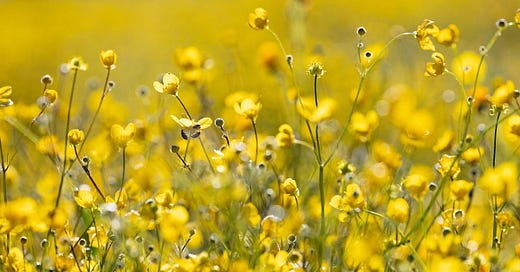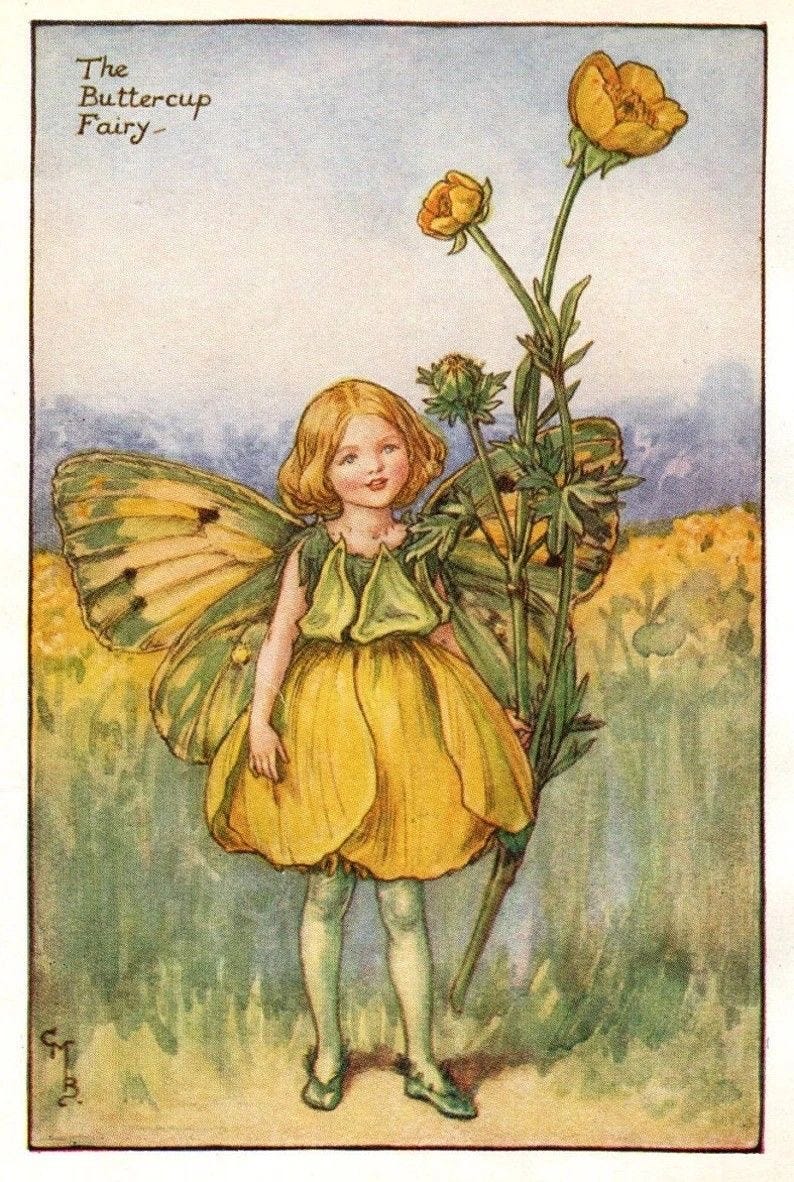One warm Sunday, I found myself looking at Buttercups, dazzled by their reflective surface, their golden hue catching the afternoon light like tiny mirrors scattered across the meadow. The five perfect petals spread like small hands offering a gift, their brightness holding light as if it were a tangible thing to be gathered and shared.
Each petal seemed to hold within it, the essence of summer itself, trembling slightly in the warm breeze that carried the scent of wild grass and distant rain.
I plucked one and held the flower beneath my hand, the way children do against each other’s necks, waiting for that golden reflection that would supposedly reveal whether we loved butter. The light bounced up, painting my hand with warmth, and for a moment I was seven again, believing in the simple divination of wildflowers and their quiet prophecies.
I recalled the research I had done and the stories I had been handed about Buttercups medicine— how this brightness harbours a shadow side. Ranunculus bulbosus, the common buttercup, contains protoanemonin, a compound that speaks to the plant's ancient wisdom about boundaries and respect. The glossy petals that so delight us serve as warning flags to grazing animals, nature's own "do not touch" sign written in the language of yellow.





